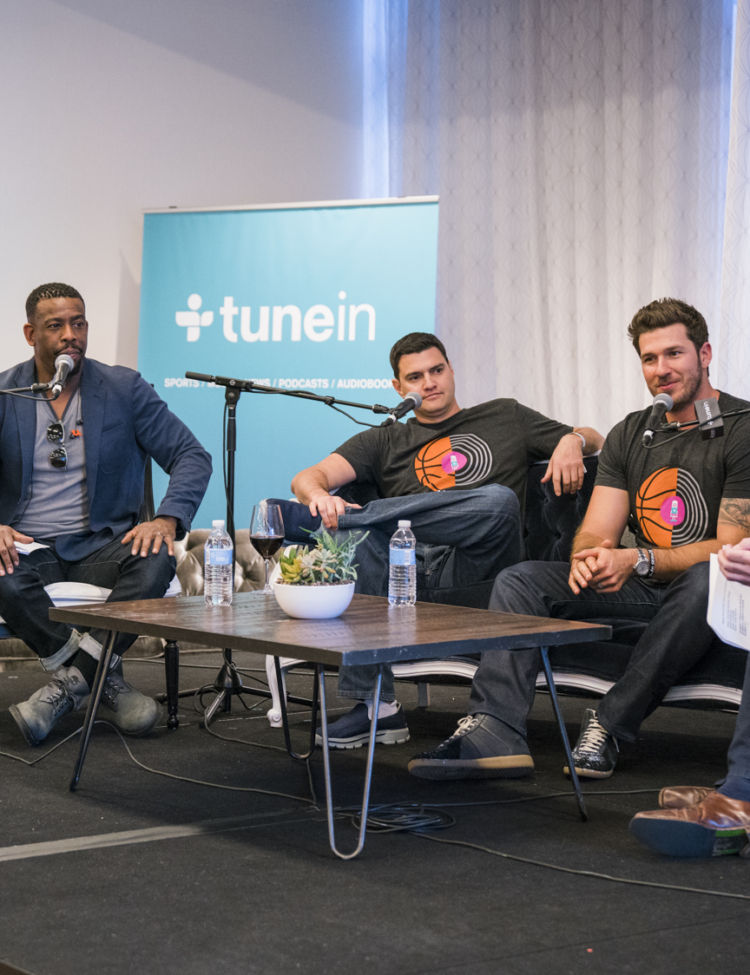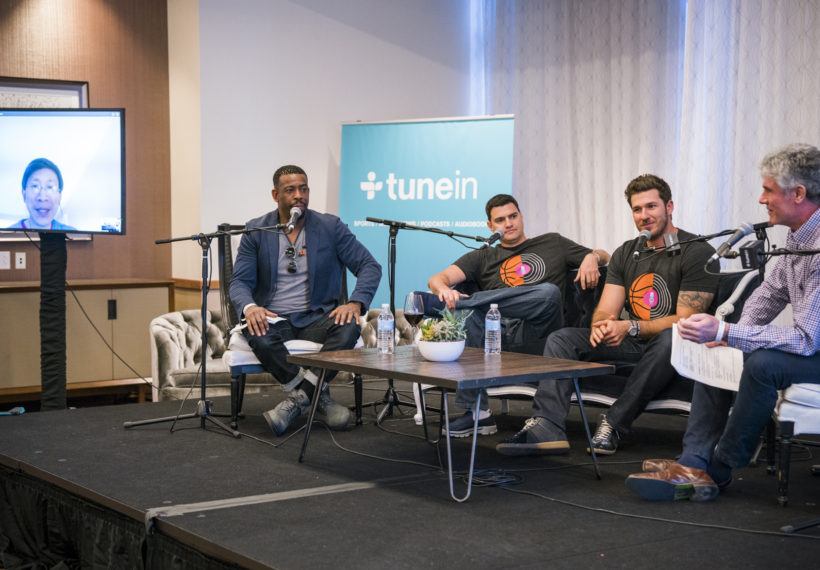About This Episode
During our off-season, Playing with Science hosts Chuck Nice and Gary O’Reilly traveled to the SXSW festival for a few “exhibition games” hosted by the folks at TuneIn. In the first of these special episodes, Chuck and Gary sit down with JP Arencibia, the former Toronto Blue Jays catcher who hit a home run in his first major league at bat and never looked back. JP is one of the few players in history to pitch, catch, and hit in the same game, making him the perfect guest to talk about the physics of baseball in and around home plate. With the help of returning guest astrophysicist Charles Liu and Holden Kushner, the host of MLB on TuneIn, you’ll learn how hitters and catchers cope with 90 mph fast balls that leave them less than half a second to react. JP spills the beans on a few of the tricks catchers use to keep the other team from knowing what pitches they’ve called and how to get a batter to chase a ball. Discover why physicists say you shouldn’t be able to throw a rising fastball, and how pitchers seem to do the impossible anyway. Find out why breaking balls break, what spin rate has to do with accuracy, how the ball’s laces interact with airflow, and how scuffing the ball can add 2 extra inches of movement to a cutter. Explore the differences between aluminum and wooden bats, why denser wood favors power hitters, and what makes the “sweet spot” so sweet. Professor Liu explains how elasticity and compression work to transfer more energy from the bat to the ball, and why predicting exit velocities is so hard to do. JP shares what players really think of umpires, and some of the ways they deal with subjective calls, overinflated egos, and respect issues. You’ll also get a glimpse into the future, as Holden and JP talk about how teams are already using realtime analytics to improve route efficiency and response times, and how they expect virtual reality training will change everything… when it’s finally ready for prime time.
NOTE: All-Access subscribers can watch or listen to this entire episode commercial-free here: Baseball: Physics at the Plate.




 Unlock with Patreon
Unlock with Patreon



 Become a Patron
Become a Patron